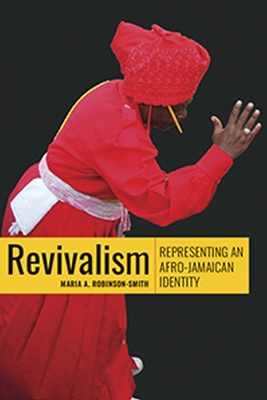 S2K Commerce - Products Dropdown
S2K Commerce - Products Dropdown
 S2K Commerce - Order Entry
S2K Commerce - Order Entry
Revivalism: Representing an Afro-Jamaican Identity
Item #:
9789766406547
Author
Robinson-Smith, Maria A.
Publisher
University of the West Indies Press
1160.00
Each
Quantity:
| Quantity | Price |
| 1 | 1160.00 |

Description
02
Bibliography
Maria A. Smith presents an overview and genealogy of Revivalism in this work. She explores the role of the Revival iconography in building a culture of shared understanding among Revivalists and, by extension, African Jamaicans. The Watt Town setting, with bands coming together from communities all over Jamaica, engaging in the same practices, is a symbolic homeland where people celebrate their Africanness and sustain the collective memory of Revivalists.
Revival iconography is explored through its many modes: visual, sound and movement. Seals, symbols and colour symbolism are presented as a representation of the repertoire of images that make up the Revival iconography. Revival cosmology in the rituals and ceremonies are explored and the spaces created by the seals are treated as liminal ones for the enactment of cultural performances.
Smith makes the point that the iconography makes it possible for Revivalists to interpret events and rituals in much the same way across Jamaica. Iconography is the symbolic language and carrier of culture that is central to the practice and production of shared meanings, and this language gives Revivalists a sense of identity. The Revival iconography stores information that makes it possible for Revivalists to reconnect with African metaphysics, thus reclaiming the African self.
Revival iconography is explored through its many modes: visual, sound and movement. Seals, symbols and colour symbolism are presented as a representation of the repertoire of images that make up the Revival iconography. Revival cosmology in the rituals and ceremonies are explored and the spaces created by the seals are treated as liminal ones for the enactment of cultural performances.
Smith makes the point that the iconography makes it possible for Revivalists to interpret events and rituals in much the same way across Jamaica. Iconography is the symbolic language and carrier of culture that is central to the practice and production of shared meanings, and this language gives Revivalists a sense of identity. The Revival iconography stores information that makes it possible for Revivalists to reconnect with African metaphysics, thus reclaiming the African self.
